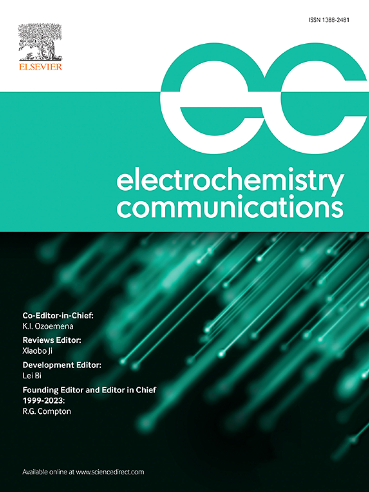基于战场优化算法的七参数PEMFC模型优化
IF 4.2
3区 工程技术
Q2 ELECTROCHEMISTRY
引用次数: 0
摘要
质子交换膜燃料电池(pemfc)的精确建模需要准确识别关键参数,这些参数通常无法从制造商那里获得,但对于预测燃料电池的性能至关重要。系统依靠七个关键参数通过ξ1、ξ2、ξ3、ξ4、λ、Rc和β来确定活化、欧姆和浓度过电位值。战场优化算法(BfOA)代表了一种新的优化方法,可以有效地找到这七个基本的PEMFC参数。BfOA使用和平方误差(SSE)来最小化估计电压与实际电池电压之间的差异,在确定六种PEMFC模型在不同工作条件下的参数方面优于其他优化算法。优化后的参数能够准确预测I-V和PV曲线,与实验数据吻合较好。BfOA的有效性和鲁棒性使其具有良好的应用前景。适合实时燃料电池建模。证明了该方法作为电子元件模拟器中PEMFC器件精确分析方法的有效性。未来的发展将探索BfOA与其他燃料电池技术的兼容性,整合实时数据功能,并在嵌入式系统中实现实时PEMFC监控算法。本文章由计算机程序翻译,如有差异,请以英文原文为准。
Seven-parameter PEMFC model optimization using an battlefield optimization algorithm
Precise modeling of Proton Exchange Membrane Fuel Cells (PEMFCs) requires accurate identification of key parameters, which are often unavailable from manufacturers but crucial for predicting fuel cell performance. The system relies on seven key parameters to determine activation and ohmic and concentration overpotential values through ξ1, ξ2, ξ3, ξ4, λ, Rc, and β. The Battlefield Optimization Algorithm (BfOA) represents a new optimization method that finds these seven essential PEMFC parameters effectively. Using Sum Squared Error (SSE) to minimize the difference between estimated and actual cell voltages, BfOA outperformed other optimization algorithms in determining parameters for six PEMFC models under varying operating conditions. The optimized parameters enabled accurate prediction of I-V and P![]() V curves, closely matching experimental data. BfOA's efficiency and robustness make it well-.
V curves, closely matching experimental data. BfOA's efficiency and robustness make it well-.
suited for real-time fuel cell modeling. Its effectiveness as a method for precise PEMFC device analysis within electronic component simulators is demonstrated. Future development will explore BfOA's compatibility with other fuel cell technologies, incorporate real-time data capabilities, and implement the algorithm in embedded systems for real-time PEMFC monitoring and control.
求助全文
通过发布文献求助,成功后即可免费获取论文全文。
去求助
来源期刊

Electrochemistry Communications
工程技术-电化学
CiteScore
8.50
自引率
3.70%
发文量
160
审稿时长
1.2 months
期刊介绍:
Electrochemistry Communications is an open access journal providing fast dissemination of short communications, full communications and mini reviews covering the whole field of electrochemistry which merit urgent publication. Short communications are limited to a maximum of 20,000 characters (including spaces) while full communications and mini reviews are limited to 25,000 characters (including spaces). Supplementary information is permitted for full communications and mini reviews but not for short communications. We aim to be the fastest journal in electrochemistry for these types of papers.
 求助内容:
求助内容: 应助结果提醒方式:
应助结果提醒方式:


